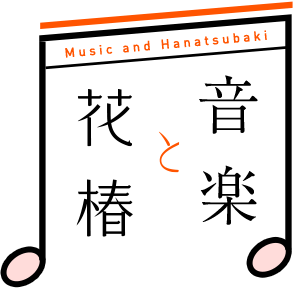
今月のSpecialで特集した資生堂のCMソングでは懐かしい音楽を取り上げています。昭和生まれの方ならばどこかで耳にしたことがある曲がひとつはあるはず。懐かしいメロディを聴いて、その当時の情景がばっと目に浮かぶ。それは音楽がおのずと時代性を帯びているという証拠です。音楽は時代の鏡。音楽を取り上げることは時代の流行を伝えるということ。今回は花椿における音楽の特集を紹介します。
Early this month, we did a special feature on nostalgic songs used in Shiseido commercials. We’re certain many people born during the Showa era (Dec. 25, 1926 through Jan. 7, 1989) were familiar with at least a few of these songs. Listening to nostalgic music conjures up images of the past, demonstrating that music naturally takes on a contemporary feel. In other words, music is the mirror to the times. Through the topic of music, we can convey the trends of certain periods in time. In this issue, we introduce Hanatsubaki’s special features on music.
ジャズ音楽
戦前にアメリカから日本に伝わったジャズは戦後に江利チエミやナンシー・梅木らの歌唱によって人気が復活、瞬く間に世間に広まりました。ジャズの歴史やアメリカで流行している楽曲の紹介など、女性にわかりやすくジャズを紹介するような内容です。
Jazz Music
Jazz music, which filtered into Japan from the U.S. before the war, underwent a post-war revival and quickly gained popularity through songs sung by the likes of Chiemi Eri and Nancy Umeki. This column explains jazz to its female readers in an easy to understand manner by introducing the history of jazz, and tunes that were popular in the U.S. at the time.
オペラ
ジャズ同様に戦後の日本でポピュラーだったのがオペラ。明治期に日本に伝えられたといわれるオペラはすでに立ち上がっていた藤原歌劇団と、1952年に設立された二期会とによって50年代中ごろに成熟期を迎えました。オペラの楽しみ方などのコラムに加え、オペラ用の化粧術などを紹介しています。
Opera
Just like jazz, opera also gained popularity in Japan after the war. Opera, which began making its presence known in Japan in the Meiji era (September 8, 1868 through July 30, 1912), made a breakthrough in the mid-1950s due to the efforts of the already-established Fujiwara opera company, and the Nikikai opera company formed in 1952. In addition to the column on how to enjoy an opera, this issue also includes an introduction on opera makeup techniques.
日本楽器の美
日本の民芸品、風物のかたちに焦点を当てた連載企画の、和楽器をテーマにした回では、当時の東大教授で文学博士の岸辺成雄が和楽器の造形美を称える論考を寄せています。「いぶしのかかった美しさ」とはまさに端的な表現です。
The Beauty of Japanese Instruments
This was a serialized column spotlighting the folk craft and customs of Japan. For the column centered on the theme of Japanese instruments, Shigeo Kishibe, who was a Doctor of Literature and a professor at the University of Tokyo at the time, contributed an article about Japanese instruments as works of art. His use of the expression, “refined beauty,” was simple and to the point.
SOUND 耳よりな<音>の話題
楽譜に表される音楽だけが音楽ではない、私たちの周りにあふれる雑音や環境音もまた音楽であると示したのはジョン・ケージでしたが、ここでは音楽の前手の「聴く」という行為について特集をしています。日本語と英語では動物の鳴き声の表し方がなぜ違うのか、セーラー服のカラーの本来の用途など、日常にあふれる音についての考察がなされています。
On the Topic of Pleasant Sounds
Composer John Cage pointed out that music is not only that which is expressed through sheet music, but also includes the sounds of the environment that surround us. This is a special feature on the act of “listening” which precedes music. The column explores the stories behind everyday sounds, such as the reason animal sounds are different in English and Japanese, and the real purpose behind the sailor’s collar.
写真の著作権、モデルの肖像権について、現在許諾の申請を進めていますが現時点で連絡が取れていない箇所がございます。掲載内容に関してお気づきの点がある方、または取り下げを希望する方がいらっしゃいましたら、編集室までご連絡ください。
We are in the process of applying for copyrights for photographs and model usage licenses, but we are still unable to contact the source for a few of the images. Please contact Hanatsubaki magazine if you have concerns regarding any of the images on this page, or if you would like to request the removal of any of these images.






